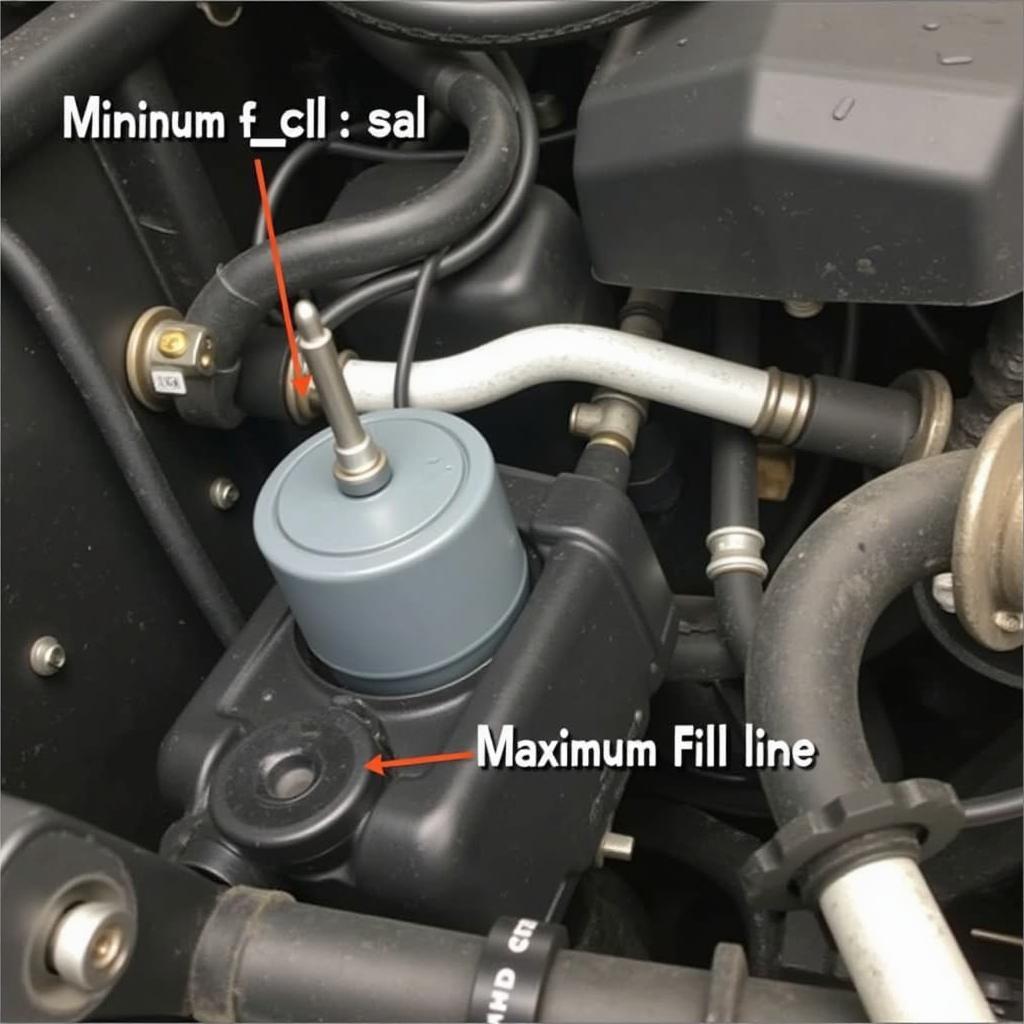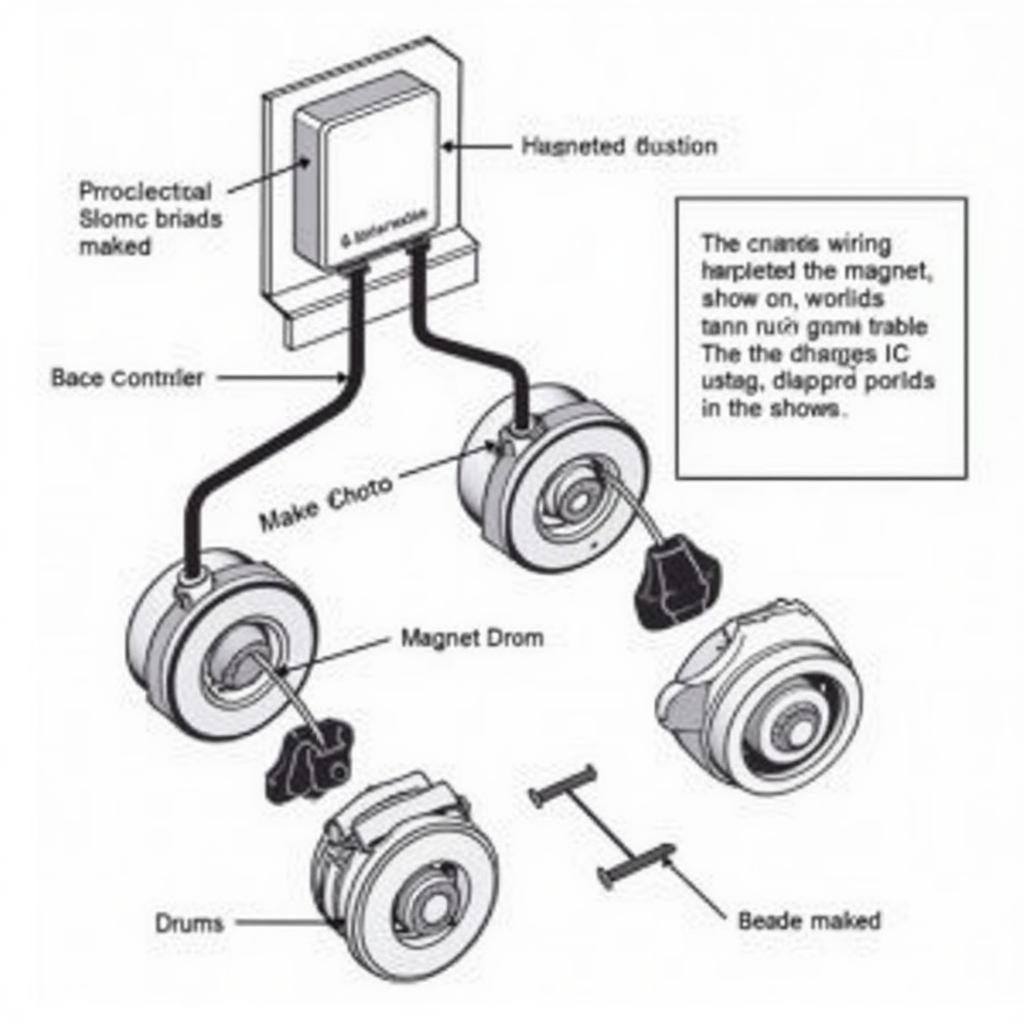The brake pressure warning switch on your 2000 Range Rover is a crucial safety component that alerts you to potential brake system issues. When illuminated, it signals a problem that requires immediate attention. This article delves into the intricacies of this switch, common causes for its activation, and steps you can take to diagnose and address the underlying issue.
The brake pressure warning switch is designed to detect imbalances in your Range Rover’s hydraulic brake system. This system relies on pressurized brake fluid to transmit force from the brake pedal to the wheels, enabling you to stop the vehicle. When the switch detects a significant difference in pressure between the front and rear brake circuits, it triggers the warning light on your dashboard.
Common Causes of Brake Pressure Warning Switch Activation
Several factors can lead to the activation of the brake pressure warning switch in your 2000 Range Rover:
- Low brake fluid: This is the most common culprit. Brake fluid naturally depletes over time, and a leak in the system can accelerate this process.
- Worn brake pads: As brake pads wear down, the brake calipers need more fluid to function correctly, potentially triggering the warning light.
- Faulty brake pressure warning switch: Like any mechanical component, the switch itself can malfunction, illuminating the warning light even if no actual pressure imbalance exists.
- Air in the brake lines: Air can become trapped in the brake lines, compressing differently than brake fluid and leading to inconsistent pressure readings.
- Master cylinder problems: The master cylinder is responsible for distributing brake fluid pressure. A failing master cylinder can cause pressure imbalances.
 2000 Range Rover Brake Fluid Reservoir
2000 Range Rover Brake Fluid Reservoir
Diagnosing the Issue
Accurately diagnosing the cause behind the activated brake pressure warning switch requires a systematic approach:
- Check brake fluid level: Open the hood and locate the brake fluid reservoir. The reservoir will have “MIN” and “MAX” lines. If the fluid level is below the “MIN” line, add brake fluid to bring it to the “MAX” line.
- Inspect for leaks: Thoroughly examine the brake lines, calipers, and wheel cylinders for any signs of leaks. Leaking brake fluid often appears as a dark, oily residue.
- Check brake pad wear: Inspect your brake pads by looking through the spaces between the wheel spokes. If the pads are significantly worn down, replacement is necessary.
 Inspecting Brake Pad Wear on a 2000 Range Rover
Inspecting Brake Pad Wear on a 2000 Range Rover
- Test the brake pressure warning switch: This step often requires a pressure gauge and specialized knowledge. If you’re uncomfortable performing this check, it’s best to consult a qualified mechanic.
“A faulty brake pressure warning switch is less common but should be considered during diagnosis, especially if other components check out,” says John Davis, a veteran automotive technician with over 20 years of experience specializing in European vehicles.
Addressing the Problem
Once you’ve pinpointed the source of the issue, take appropriate action:
- Low brake fluid: Top up the brake fluid to the “MAX” line using the recommended fluid type for your 2000 Range Rover. If the level drops quickly, it indicates a leak requiring immediate professional attention.
- Worn brake pads: Replace worn brake pads in pairs (both front or both rear). Driving with worn brake pads compromises your safety and can damage other brake components.
- Faulty brake pressure warning switch: Replace a malfunctioning switch to ensure accurate brake system monitoring.
- Air in the brake lines: Bleed the brake system to remove trapped air. This procedure involves opening and closing bleed valves on each wheel cylinder while another person depresses the brake pedal.
- Master cylinder problems: A failing master cylinder requires professional repair or replacement.
Conclusion
Ignoring an illuminated brake pressure warning light in your 2000 Range Rover can have serious consequences. By understanding the potential causes and following the diagnostic steps outlined above, you can address the issue promptly and ensure your safety on the road.
Remember, if you’re ever unsure about diagnosing or repairing your brake system, don’t hesitate to seek assistance from a qualified mechanic. Your safety is paramount.

